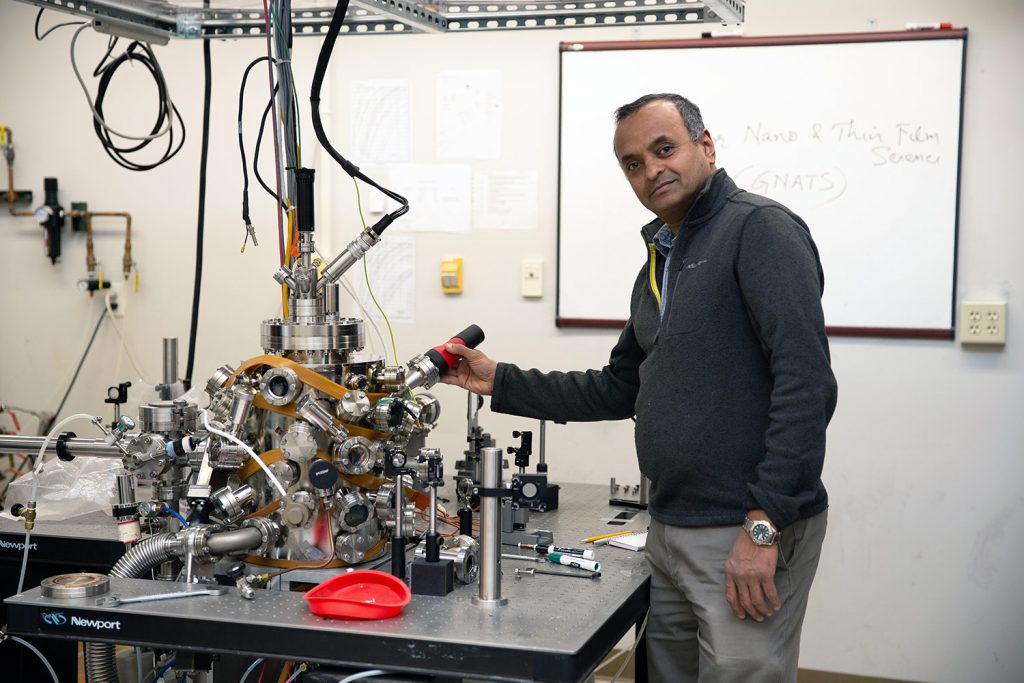The phrase “cloaked in secrecy” can often be used to describe research projects, but thanks to breakthroughs in the College of Engineering, optical cloaking is no longer just the domain of science fiction.
Ramki Kalyanaraman, a professor in both CBE and the Department of Materials Science and Engineering, and fellow materials science professor Gerd Duscher recently made a breakthrough in research that could lead to a better coupling of light and magnetism, which in turn could yield improvements in data storage, sensing, imaging, and optical communication.
Using silver and a cobalt-iron compound, they focused on exploring the unique interactions of those materials—specifically, their magnetic and visibility properties.
“The concept is that by finding the right mix of materials with these properties you can make data archiving faster, cheaper, and with a higher density of storage,” said Kalyanaraman.
In finding the right mix of materials, the UT-led team happened upon an entirely unexpected result.
The group—which also includes researchers from Washington University and Southern Illinois University and support from UT’s Center for Materials Processing and Oak Ridge National Laboratory’s Center for Nanophase Materials—found that the reaction between silver and cobalt serves to significantly enhance the optical interaction with cobalt.
Put another way, the team has discovered a magnetic material with extremely strong optical interactions that place it under consideration as a metamaterial, meaning a material with properties not found in nature.
Intriguingly, this also opens up its possible use for invisibility and cloaking.
“This whole process has been discovery-driven, and one of those discoveries was that these same materials exhibited some strong optical visibility properties,” said Kalyanaraman. “It took a while for us to believe what we were seeing was real.”
Lest anyone get their hopes up about any sci-fi dreams, Kalyanaraman is quick to caution that this is all still occurring at the nano level.
Meanwhile, Kalyanaraman said the other properties of the materials might make them useful as medical sensors.
“It should be possible to come up with a way to make these materials respond when certain things are happening in the body, like cancer,” said Kalyanaraman.
For now, the team—which includes graduate students in materials science and chemical engineering— is studying how and why the pairing behaves as it does and whether it can be duplicated using other materials.
